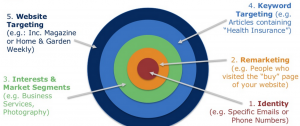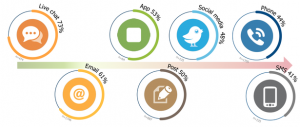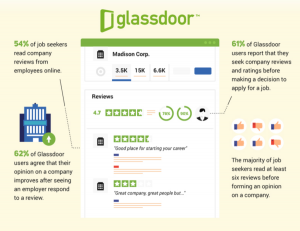Do you want more subscribers to read your emails? If so, you’re not alone. Email marketing is one of the best ways to grow your business and turn more prospects into paying customers.
You may have found success building your lead list, but that’s only one piece of the puzzle. Now, you’re tasked with convincing people who were willing to give you their name and email address to engage with your business.
This task sounds daunting at first, but you’ll be glad to know that there are plenty of ways you can build trust with your subscribers and boost your open rate. Today, we will share several helpful strategies you can use to spark engagement and get more value from your email marketing strategy.
Ready? Let’s get started!
Welcome New Subscribers
When a user fills out your email registration form, the first thing you should do is send them a welcome email. Research shows that welcome emails have an open rate of 82%, which is quite impressive. In other words, for every 100 emails you send, 82 people will click-through and read what you have to say.
Let’s put this into context; welcome emails have a significantly higher open rate when compared to virtually every type of marketing email. So, this is a prime time to build rapport with your new subscriber and convince them to continue opening your emails.
If you want to make the most of your welcome emails, you have to set expectations. Let your new subscribers know who you are, how you want to help, and how often you’ll reach out to them in the future. You’ll find that people are more willing to open your emails if they know when they will get another message from your company.
It’s also essential to include things like lead magnets in your welcome email. If someone signs up under the impression that they’ll get a 30% discount, you can win them over by immediately following through on your promise.
Let Users Choose Their Preferences
You can dramatically improve your open rate by making it easy for visitors to choose their preferences before and immediately after signing up for your lead list. We like to include several optional questions on our signup form.
For instance, we may ask visitors what led them to register for our list. We’ve found that information helps us identify specific goals and pain points within our audience segments.
There are plenty of ways to let your subscribers customize their experience after they join your email list. You can allow users to opt-out of specific types of emails, opt-in to receive relevant content, and choose the frequency that they’ll get messages from your business.
We recommend adjusting how users choose their preferences as you gather more data on your audience and build accurate customer personas.
Add Value with Personalization
Next, let’s talk about how you can take what you’ve learned and add more value to your emails through personalization. Believe it or not, 80% of shoppers say they are more likely to interact with a business that offers personalized content and offers.
If you hope to maintain your audience and keep them invested in your emails, start thinking about ways you can build a personalized experience for each of your subscribers.
One easy way to get started is to include first names in your emails. Plenty of readers feel valued when one of their favorite companies acknowledges them by name. You can take this a step further by including personal promotions for visitors for events like their birthday.
Not only do special promotions help make your emails more personal, but they also encourage sales. Limited-time birthday deals inspire fear of missing out (FOMO). Research shows that 60% of people report making a purchase after receiving a FOMO-inspired offer.
Your personalization efforts should extend beyond your offers. Once you understand what kind of content each reader wants to see, curate email campaigns with content that matches their needs and goals. You’ll see that adding a touch of personalization to your email marketing strategy can dramatically improve your open rate.
Send Your Emails at the Right Time
Timing has a major impact on whether people open your emails. Many studies have focused on determining when businesses should schedule their emails to go out to subscribers.
It was discovered that the absolute best time to send an email is on Tuesdays at 10 AM (local time for your subscribers). However, there are plenty of other times when subscribers seem to be more receptive to reading and engaging with marketing emails.
Additional research shows that Wednesday and Thursday are both excellent days to send out your emails. Aside from 10 AM, the most popular times include 6 AM, 2 PM, and 8 PM.
Don’t be afraid to experiment with your timing so you can find a schedule that works for your readers. You always want to consider the habits of your audience when deciding on the perfect time to send your marketing emails. In fact, you may choose to make email time a preference option when visitors are filling out their initial subscription form.
Check for Deliverability Issues
Finally, let’s talk about deliverability issues. You can spend all the time you want growing your email list; if subscribers can’t receive your messages, what’s the point?
You may be shocked to learn that, on average, 21% of emails sent out are never delivered to their intended audience. This means that you’re likely spending a lot of time, money, and energy on people who will never see your emails.
The good news is there are several things you can do to improve your email deliverability rate. If you’re sending emails from your own server, you’ll want to authenticate your IP address and server. You can use several tools to test your emails to see how you can improve your deliverability rate from a technical standpoint.
We also suggest scrubbing your list at least twice a year. You should establish a time when a visitor is considered inactive and try to reengage them with a unique campaign. If you still don’t get any feedback, it may be time to remove them from your list. If you’re continuously sending emails to people who don’t bother to read your messages, there’s a good chance they will end up in the spam folder, which can damage your reputation as a sender.
Final Thoughts
Getting people to read your emails is a time-consuming process, but certainly, one worth pursuing. If you’re struggling to boost your open rate, the tips offered here today will give you the framework you need to develop a captivating email strategy that keeps subscribers engaged with your brand.
Digital & Social Articles on Business 2 Community(16)








